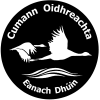When we were children in the 1950’s, one of the red-letter days was St. John’s Day, better known as Bonefire Night. There was much excitement and great competition among we school children as to which group would have the biggest, brightest fire. For several days before the much-awaited night, the whole place would be a hive of activity collecting fuel for the fire. Some people contributed turf, more gave scraps of timber, but the most prized material of all was Bog Deal. Bog deal is the remains of the forests of Ireland that covered the country many years ago. There was an abundance of it in the local bogs close to where we lived, namely Barana, and other townlands around the district. To a child’s eye catching a glimpse of these ancient forms bursting through the bog land, would resemble the backdrop of a ghost story. Some had grotesque shapes and were extraordinarily heavy to carry, so the donkey and cart would be brought into service to assist with the collection of the more awkward specimens. Sometimes our group of gatherers would get lemonade and sweets, but always we had a great time heaving and pulling these giant forms from our bog lands.

